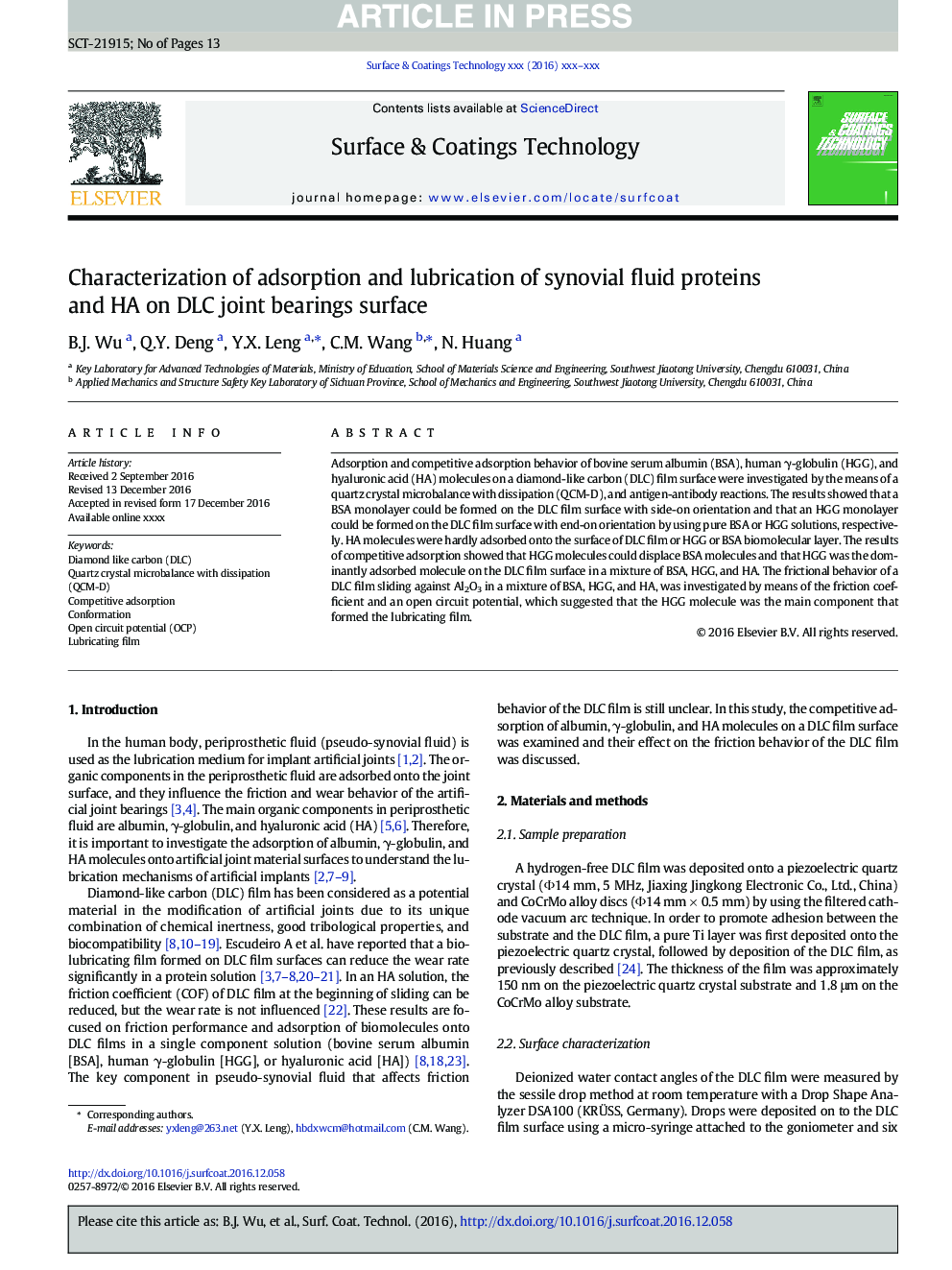| Article ID | Journal | Published Year | Pages | File Type |
|---|---|---|---|---|
| 5464981 | Surface and Coatings Technology | 2017 | 13 Pages |
Abstract
Adsorption and competitive adsorption behavior of bovine serum albumin (BSA), human γ-globulin (HGG), and hyaluronic acid (HA) molecules on a diamond-like carbon (DLC) film surface were investigated by the means of a quartz crystal microbalance with dissipation (QCM-D), and antigen-antibody reactions. The results showed that a BSA monolayer could be formed on the DLC film surface with side-on orientation and that an HGG monolayer could be formed on the DLC film surface with end-on orientation by using pure BSA or HGG solutions, respectively. HA molecules were hardly adsorbed onto the surface of DLC film or HGG or BSA biomolecular layer. The results of competitive adsorption showed that HGG molecules could displace BSA molecules and that HGG was the dominantly adsorbed molecule on the DLC film surface in a mixture of BSA, HGG, and HA. The frictional behavior of a DLC film sliding against Al2O3 in a mixture of BSA, HGG, and HA, was investigated by means of the friction coefficient and an open circuit potential, which suggested that the HGG molecule was the main component that formed the lubricating film.
Keywords
Related Topics
Physical Sciences and Engineering
Materials Science
Nanotechnology
Authors
B.J. Wu, Q.Y. Deng, Y.X. Leng, C.M. Wang, N. Huang,
